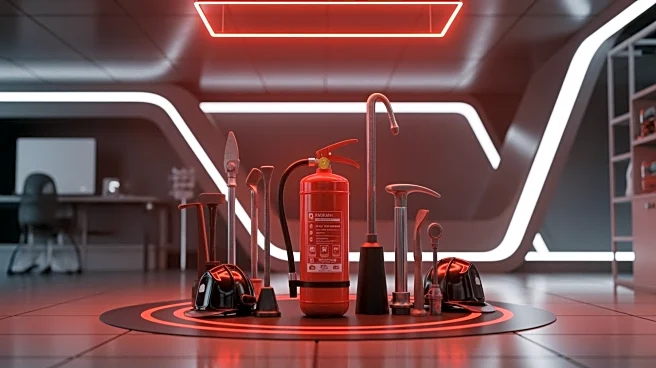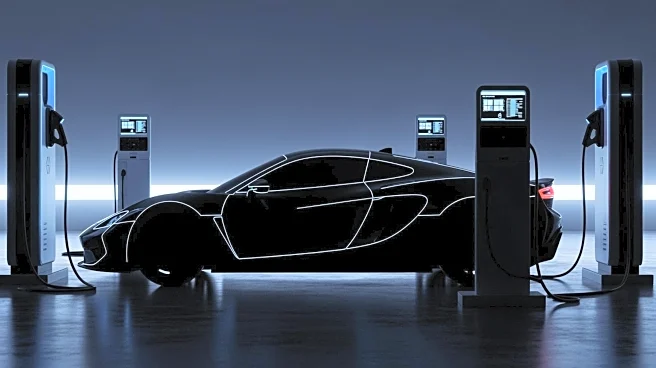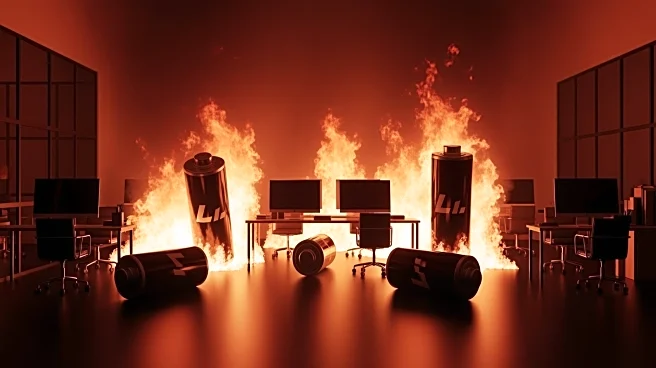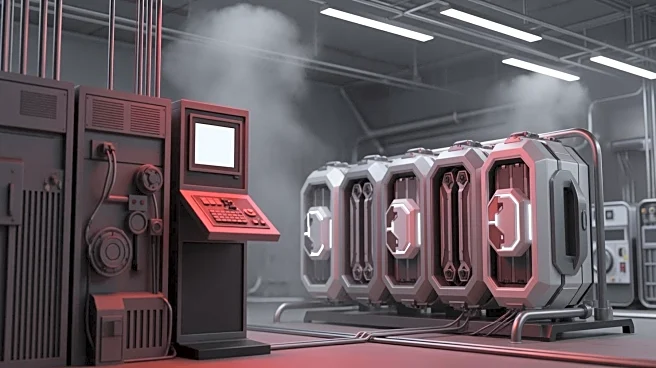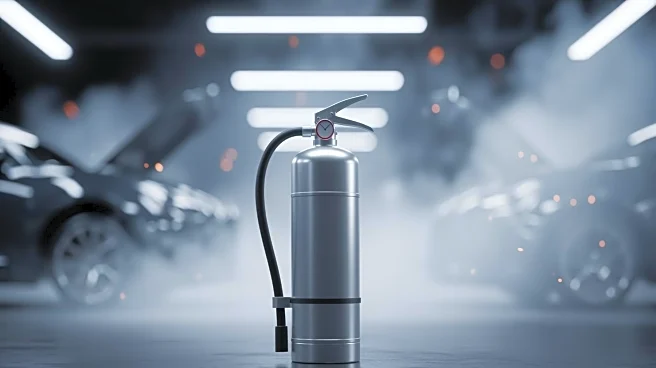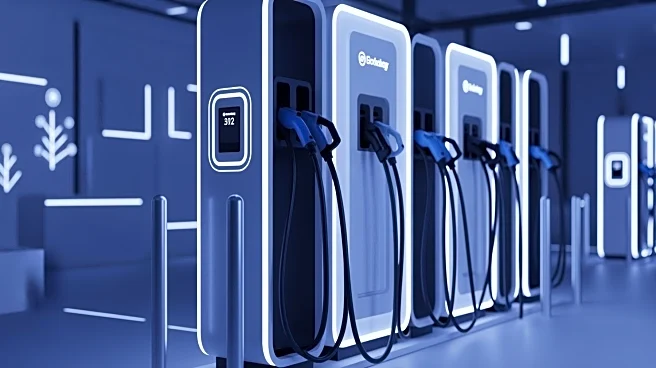What's Happening?
A significant fire broke out at General Motors' design studio in Pasadena, involving lithium-ion batteries and prototype cars. The Pasadena Fire Department declared the incident a four-alarm fire due to the hazardous materials involved. More than 100
firefighters and a hazardous materials team were deployed to combat the blaze. The fire presented unique challenges as water cannot be used to extinguish lithium-ion battery fires, which can lead to destabilizing chemical reactions. The fire took over an hour to locate due to thick smoke engulfing the 149,000-square-foot campus. A firefighter was trapped during the incident but was safely rescued without injuries. The cause of the fire is under investigation.
Why It's Important?
The fire at General Motors' facility highlights the growing concerns around lithium-ion battery safety, especially as these batteries become more prevalent in electric vehicles and other technologies. The incident underscores the need for specialized firefighting techniques and equipment to handle such fires, which can pose significant risks due to chemical reactions. The event may prompt further scrutiny and regulatory considerations regarding the storage and handling of lithium-ion batteries in industrial settings. It also raises questions about the safety protocols in place at facilities dealing with advanced automotive technologies.
What's Next?
Fire crews will remain on site overnight to manage the hazardous materials involved in the blaze. Investigations into the cause of the fire are ongoing, and it may take several days to determine the exact cause due to the complex nature of the building and the materials involved. The incident may lead to increased safety measures and protocols at similar facilities across the country. Stakeholders in the automotive and battery industries may need to reassess their safety standards and emergency response strategies.
Beyond the Headlines
The fire at General Motors' design studio could have broader implications for the automotive industry, particularly in the context of electric vehicle production and safety. As the industry moves towards more sustainable energy solutions, the risks associated with lithium-ion batteries need to be addressed comprehensively. This incident may drive innovation in battery technology to enhance safety and reduce the likelihood of such fires. It also highlights the importance of training and preparedness for emergency responders dealing with new technological hazards.
